Blog Archives
Birds in Lonehill, South Africa
I’m in South Africa for a few days, enjoying the birds as well as other aspects of this interesting country. I photographed most of the birds in this post while on a short stroll through Lonehill Park. Lonehill is an outer suburb of Johannesburg, neighbouring on Witkoppen, and many of the bird species make their homes in both places. This post shows only the birds that I didn’t include in my earlier post about birds in Witkoppen Spruit Park.
First up, absorb the atmosphere of the park by watching this short video:
The centrepiece of the park is a large pond surrounded by reed beds and trees. In the background is the lone hill that gives the suburb of Lonehill its name:
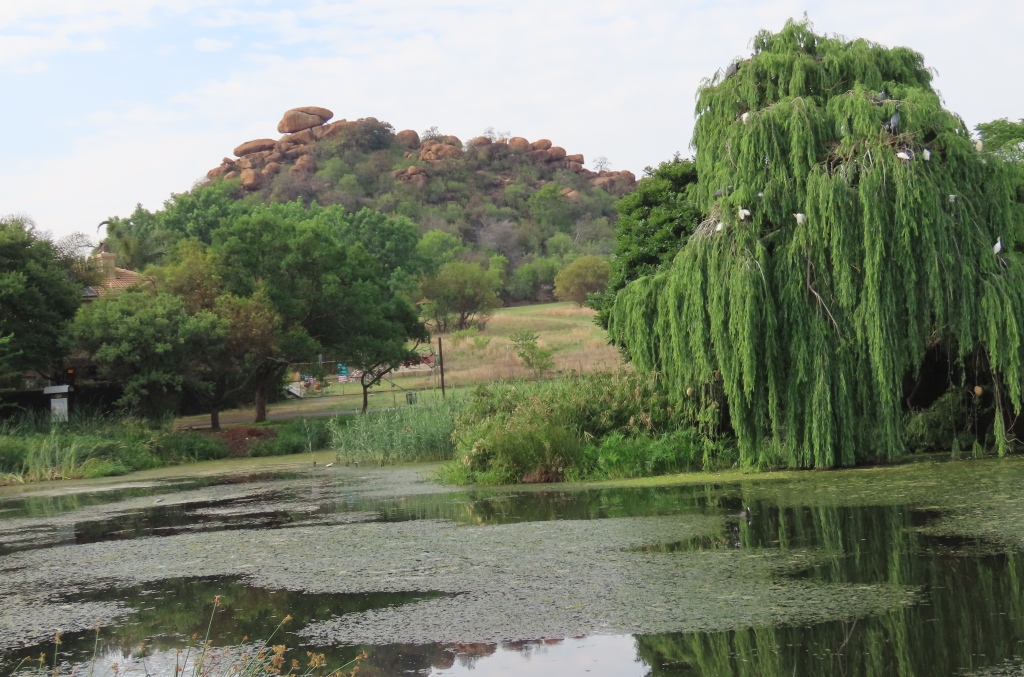
The tree on the right is home to several herons and egrets. They’re quite busy and noisy, as it’s breeding season. From the very top of the tree, a Black-headed Heron surveys its domain:

Lower down, another Black-headed Heron combines preening with sitting on a nest:
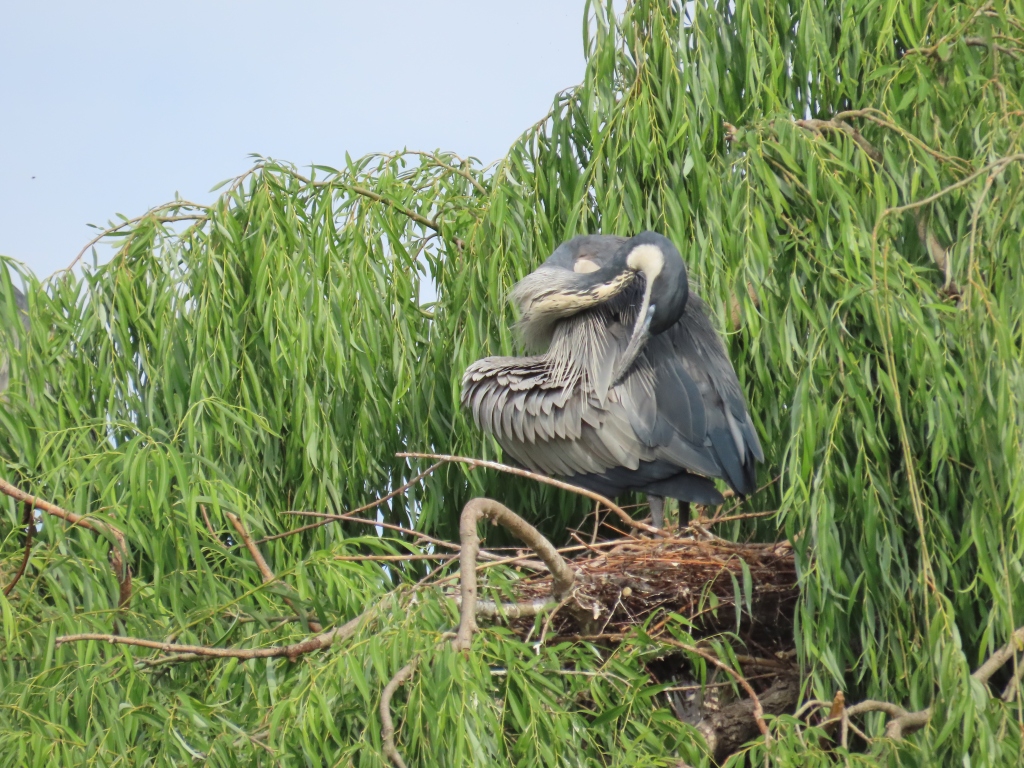
Two Cattle Egrets groom and strut their stuff:
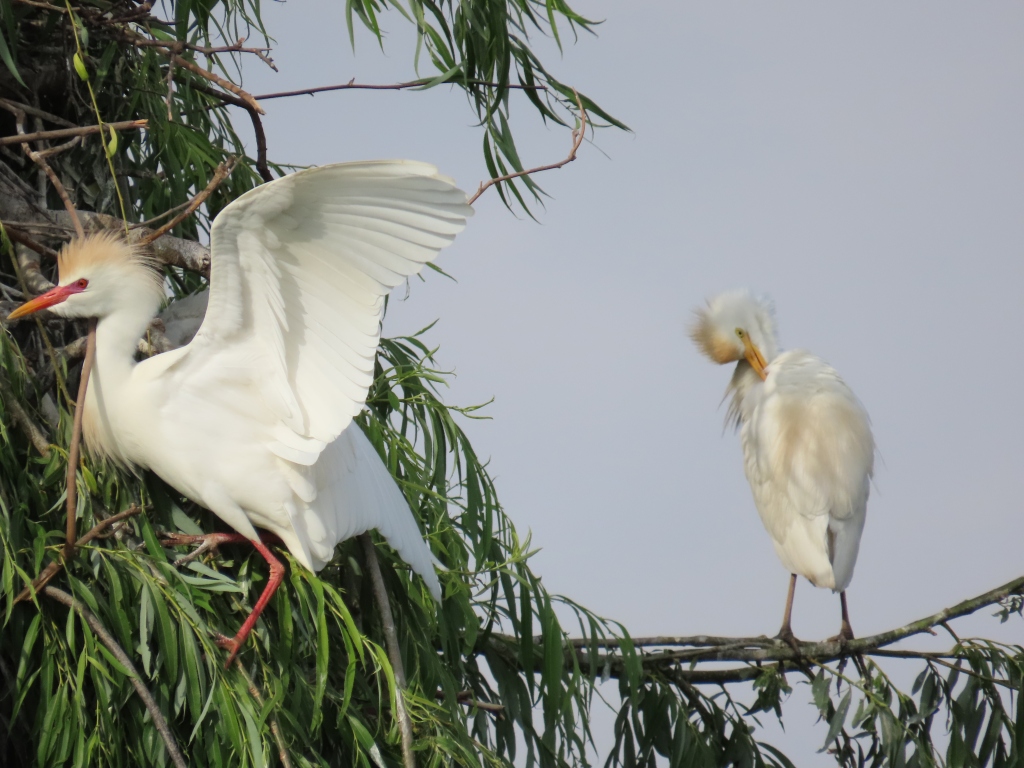
After a few more preliminaries, they get good and cosy:
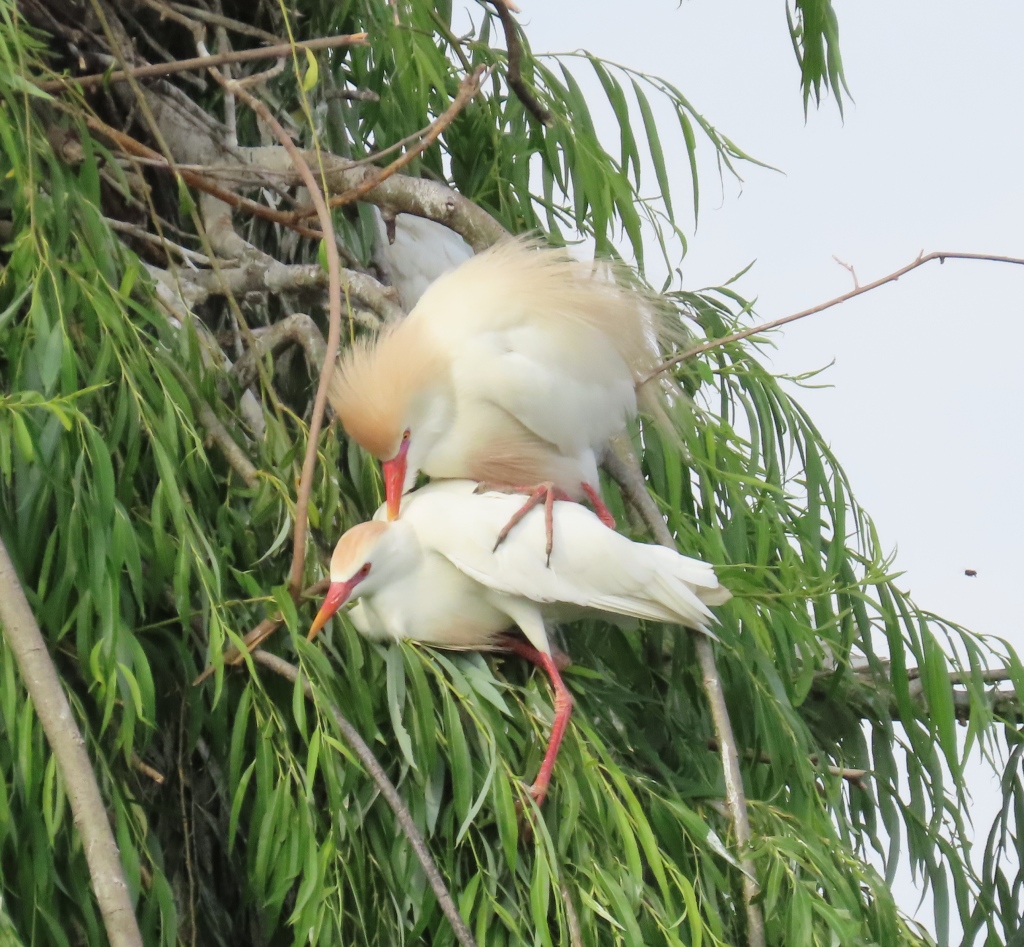
Down below, a Bronze Mannikin perches on a reed stem. I love the colouring of this little finch, especially its two-tone beak:
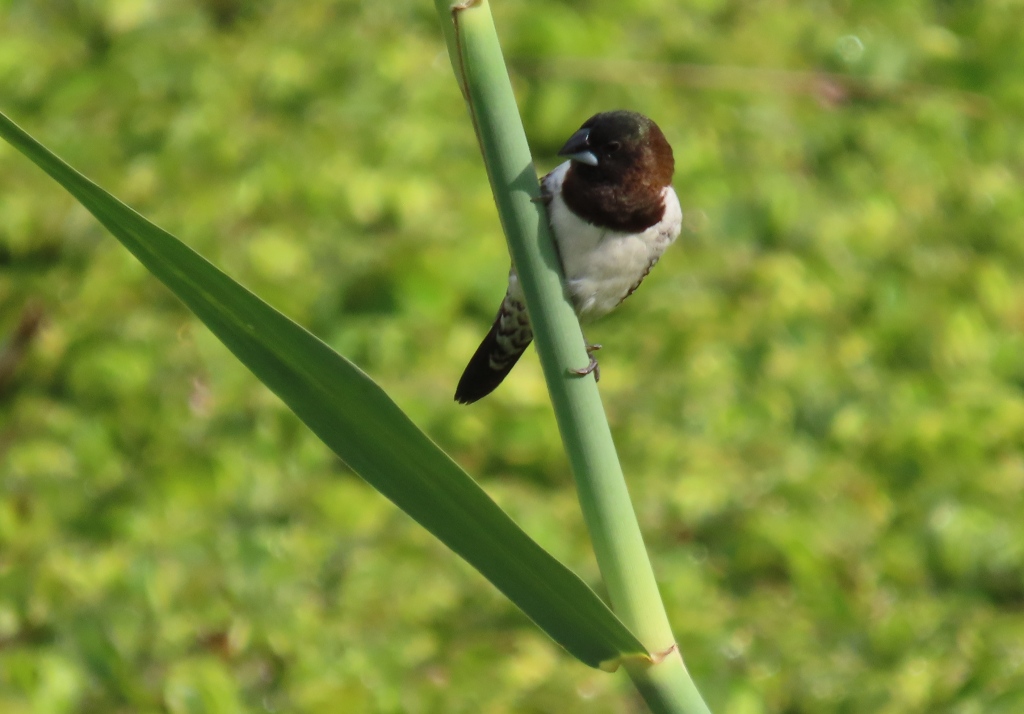
Several Bronze Mannikins were walking on the plants that covered part of the lake. Using my camera’s zoom, I managed to get this shot that shows the water droplets glistening on the plants around the bird:

The next little fellow is a Thick-billed Weaver. Like the Red Bishops and Masked Weavers shown in my earlier post, Thick-billed Weavers build intricate woven nests from reeds and grass:
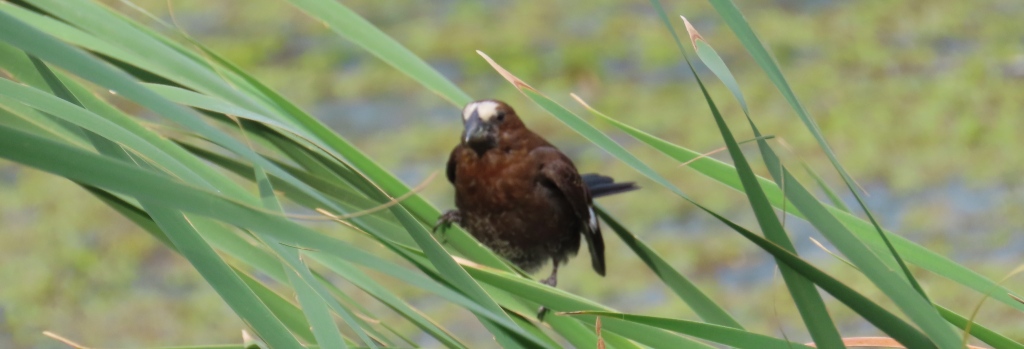
A Common Moorhen shows its red garters:
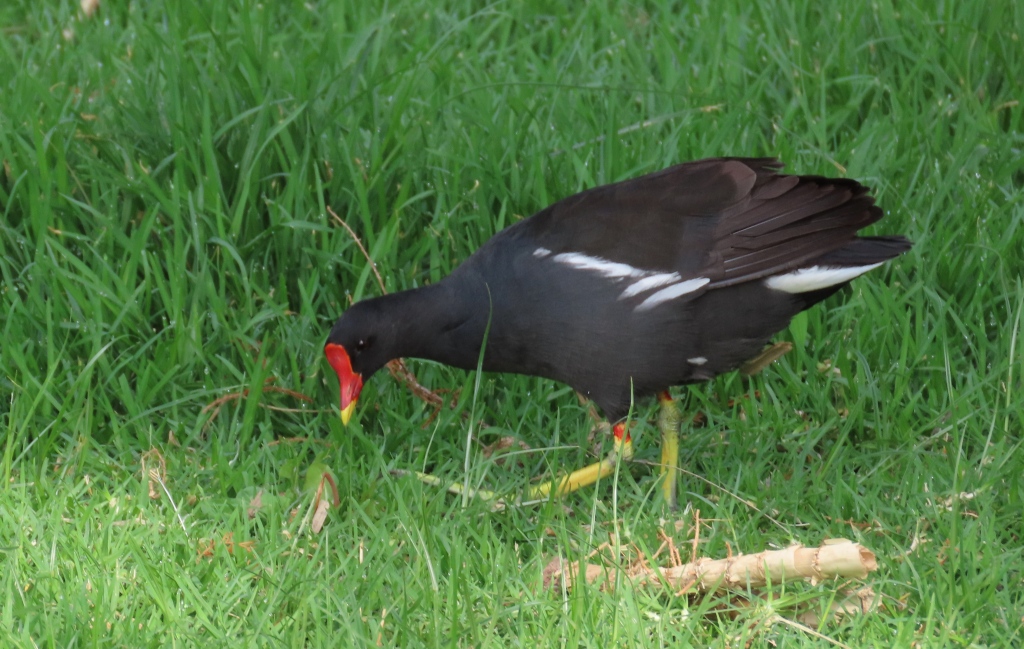
Striking in its coat of electric blue is a sharp-eyed Greater Blue-eared Starling:
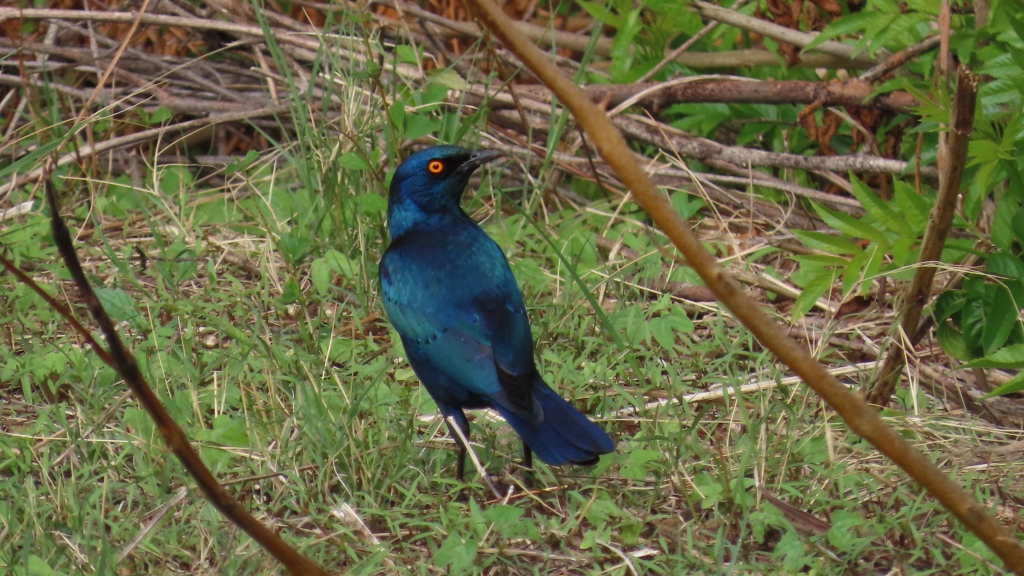
A Laughing Dove and a Rose-ringed Parakeet brighten up some bare branches:

Next up is a Mousebird. I saw this particular bird not in the park, but in the garden of a friend in Lonehill:

Mousebirds get their name from the way they scurry around gathering food, which reminds people of mice. Here’s another shot of the same bird:
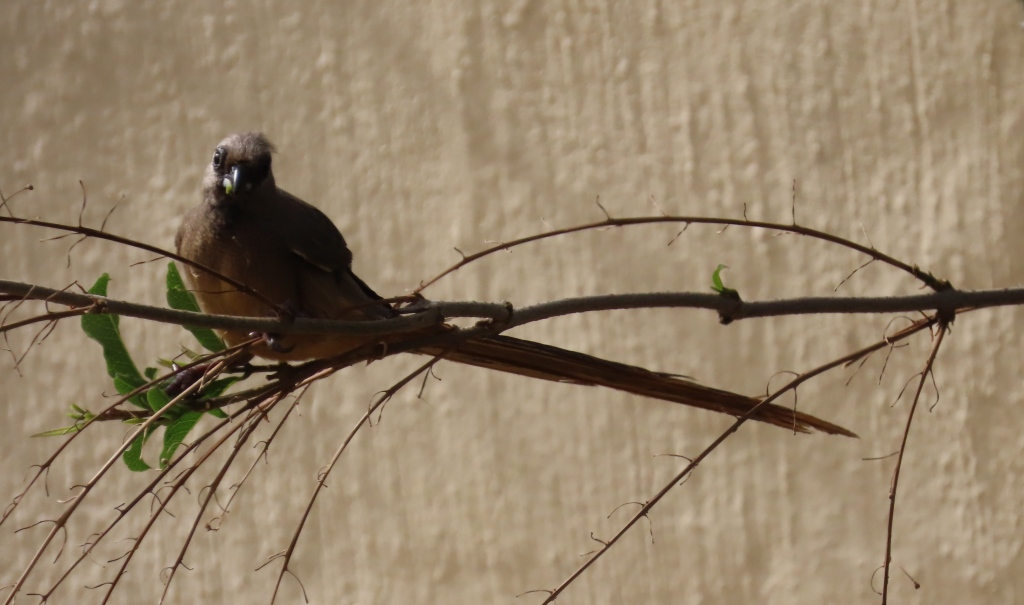
Also in a Lonehill garden, we saw a pretty pair of Rosy-faced Lovebirds, which are native to south-western Africa. There are feral colonies in various parts of South Africa. These two are frequent visitors to our friends’ bird feeder:

Another frequenter of the bird feeder is this Wood Hoopoe, also called a Scimitarbill. Like most of the birds in this post, Wood Hoopoes are native to this part of South Africa. They’re striking birds, almost entirely black with orange bills and feet, and white flares in their wings and tails:
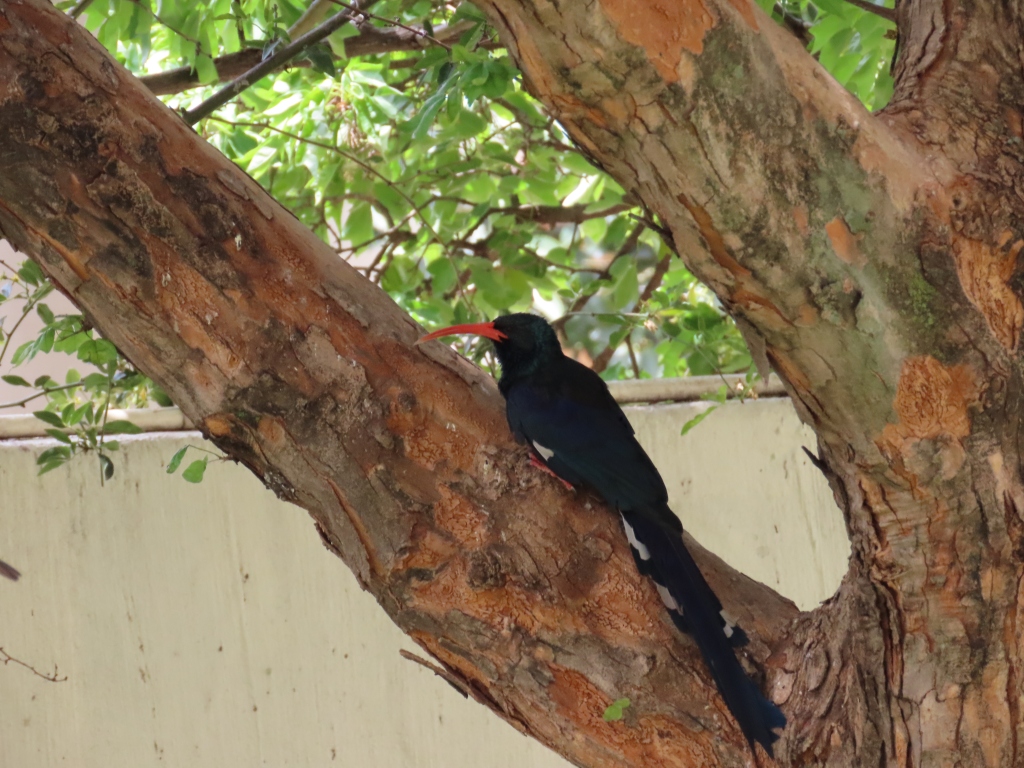
That’s it That’s it for my collection of birds from the suburbs around Sandton. I’ll be back when I spot another bird!
Birds in Witkoppen, South Africa
I’m currently in South Africa, a little outside the usual geographical range of this blog! While here, I’m taking in a bit of the bird life. I photographed the birds in this post in a little patch of green called Witkoppen Spruit Park. Witkoppen is an outer suburb of Johannesburg, near Sandton. For such a small piece of land surrounded by residential suburbs, there’s an amazing variety of birds in the park. Well worth a visit, if you’re in the area.
To get in the mood, watch this short video and listen to the sounds of the birds all round:
The flashes of red that you see in the video are Southern Red Bishops, a little bird in the weaver family. Here’s one of them caught in a rare moment of stillness:
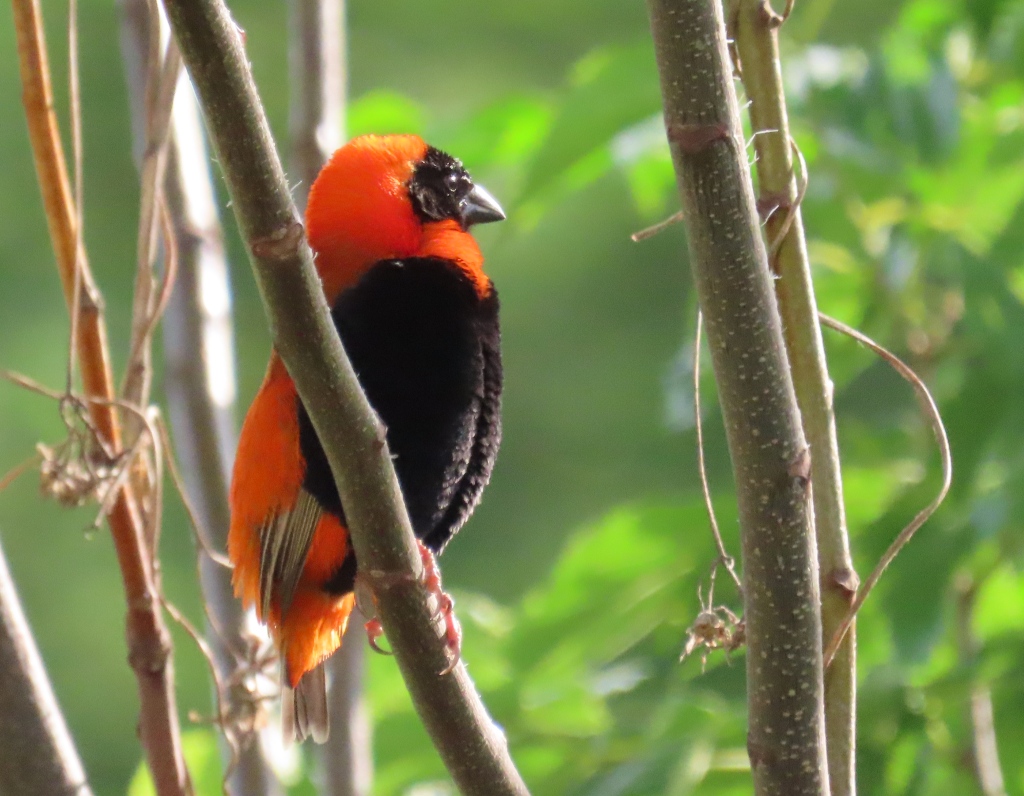
Like other weavers, Southern Red Bishops build nests of intricately woven reeds hanging from tree branches or tall reed stems:

Here’s one of the birds in a quarrelsome mood:
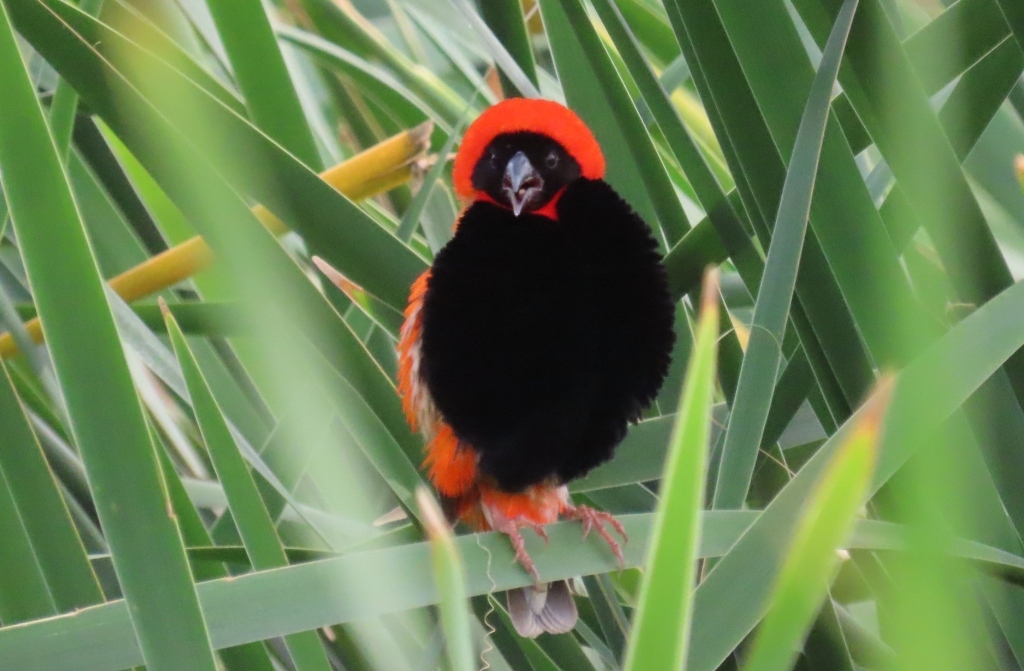
Nearby, a Southern Masked Weaver peers out from behind the leaves of a tree:
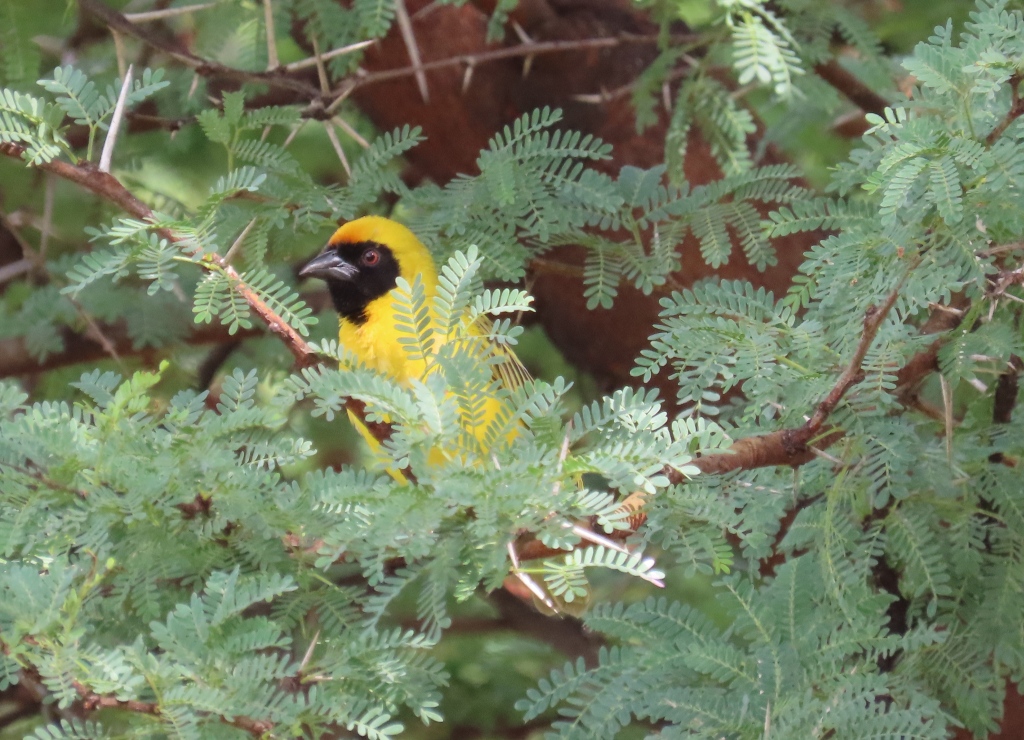
The bright colours belong to the males of the species. Here’s a female weaver perched above a nest. I don’t know if it’s a Red Bishop or a Masked Weaver:
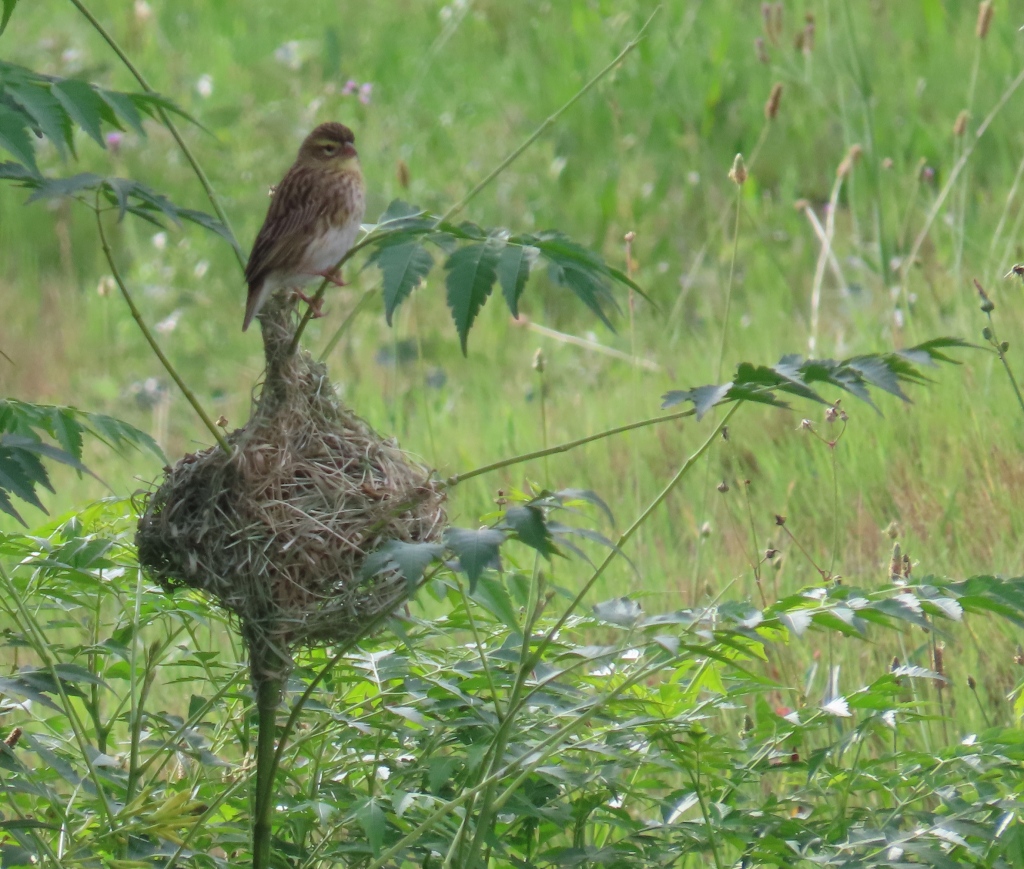
Perched high in a tree, a Grey Lourie shows that you can look smart even in a low-key colour:

Grey Louries are also called the grey go-away bird. Here’s another one:

A Pin-tailed Whydah sports its long tail. This tiny bird’s body is about 12 cm long, while the tail adds another 20 cm to the bird’s overall length:

Some Lesser Striped Swallows gather around a small puddle in the middle of the path:
In the nearby pond, a Red-knobbed Coot feeds in the algae-rich water:
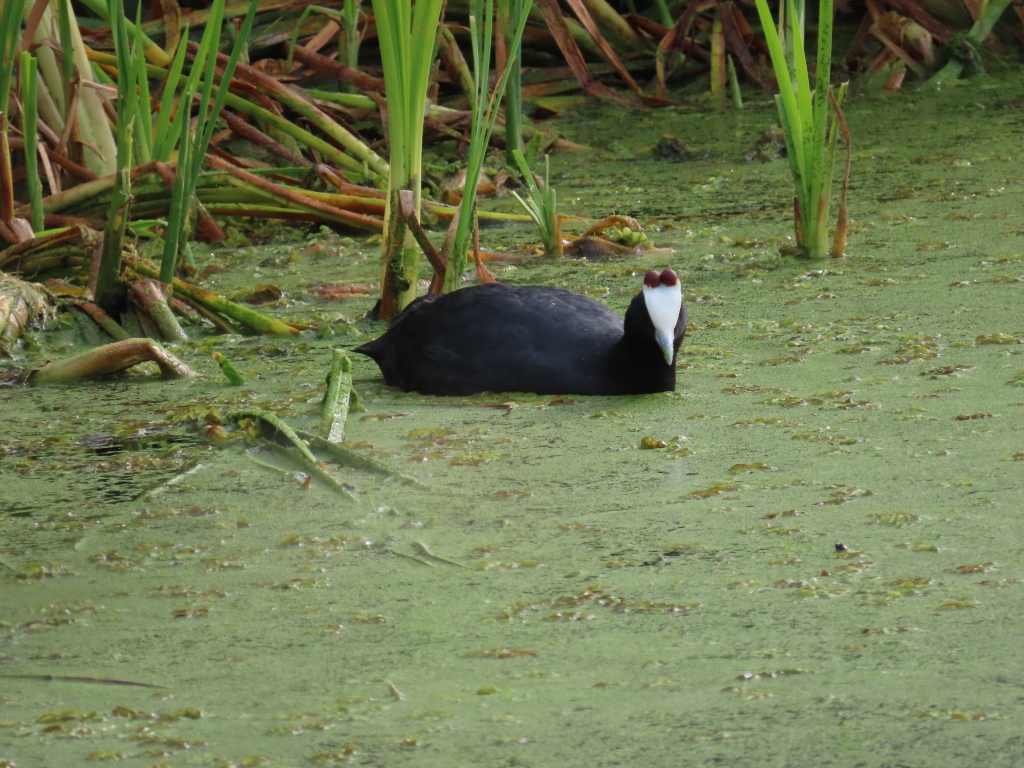
An Egyptian Goose shepherds its chicks through the flotsam and jetsam of the surrounding suburbs:
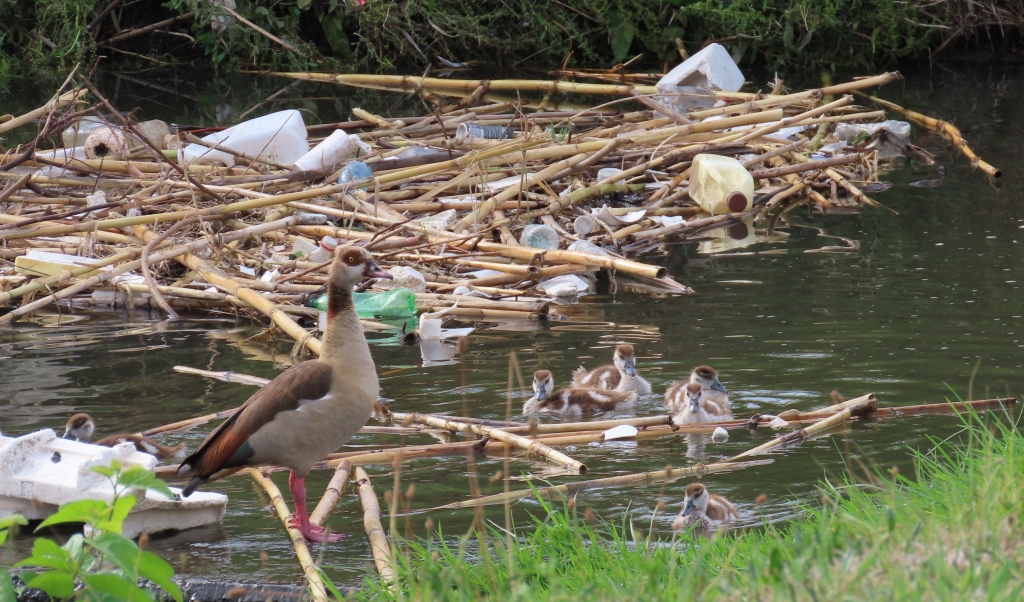
Sunlight adds a gloss to the plumage of a Hadada Ibis:

An African Sacred Ibis stalks through the undergrowth:
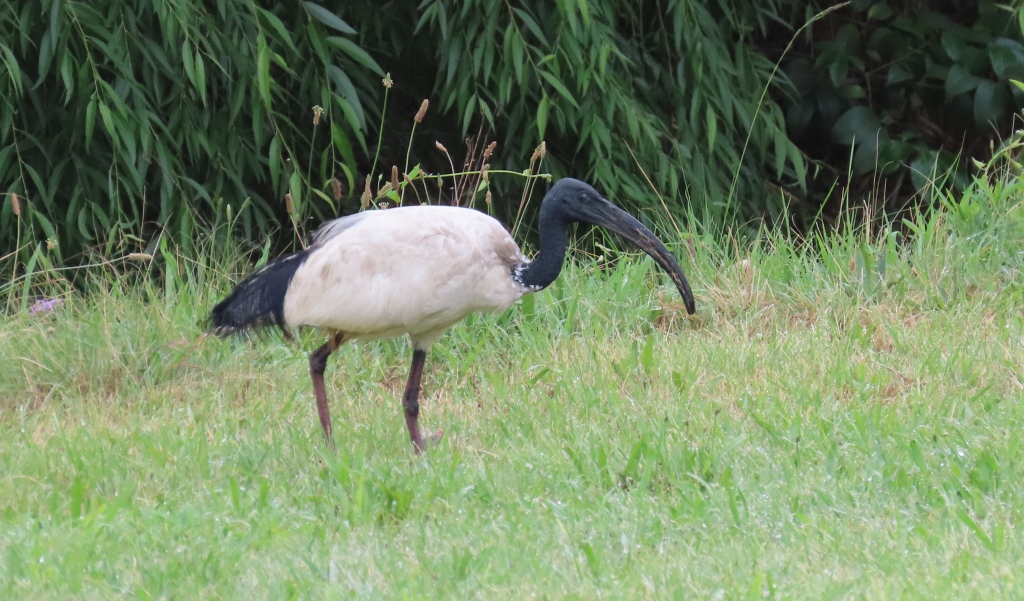
Another bird stalks the undergrowth, sometimes standing so still that it was almost impossible to spot. My camera’s super zoom brings it close enough to see that it’s an African Wattled Lapwing:

Fiscal Shrikes, also known as Butcher Birds, zoom from cover to cover. Here’s one that stayed still long enough to be caught in a photograph:

High in the trees, Rose-ringed Parakeets chat and screech. These little parrots aren’t native to South Africa. They established themselves in the suburbs after escaping from captivity in numbers large enough to start breeding:
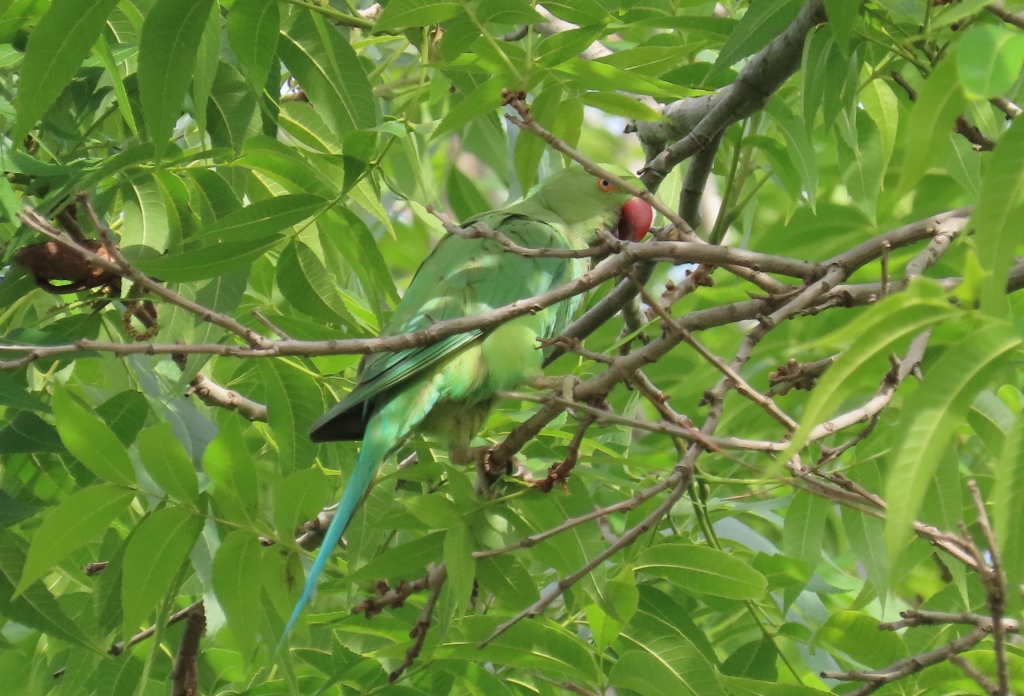
In my next post I’ll show you some birds in Lonehill, a neighbouring suburb to Witkoppen.